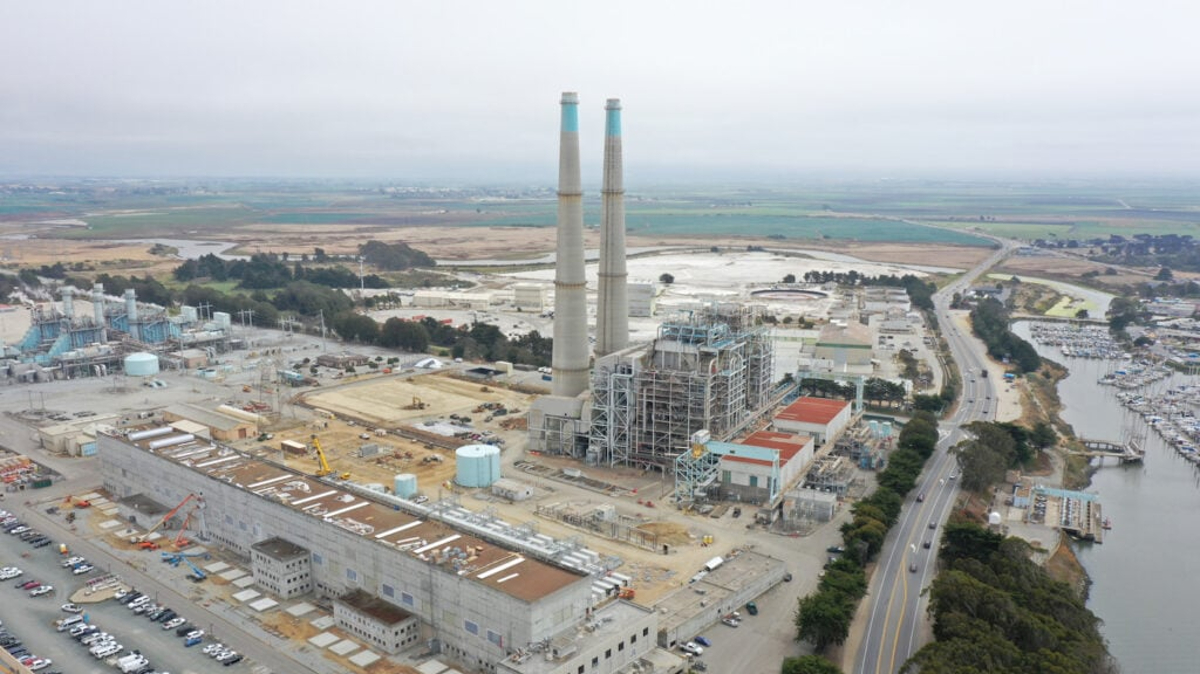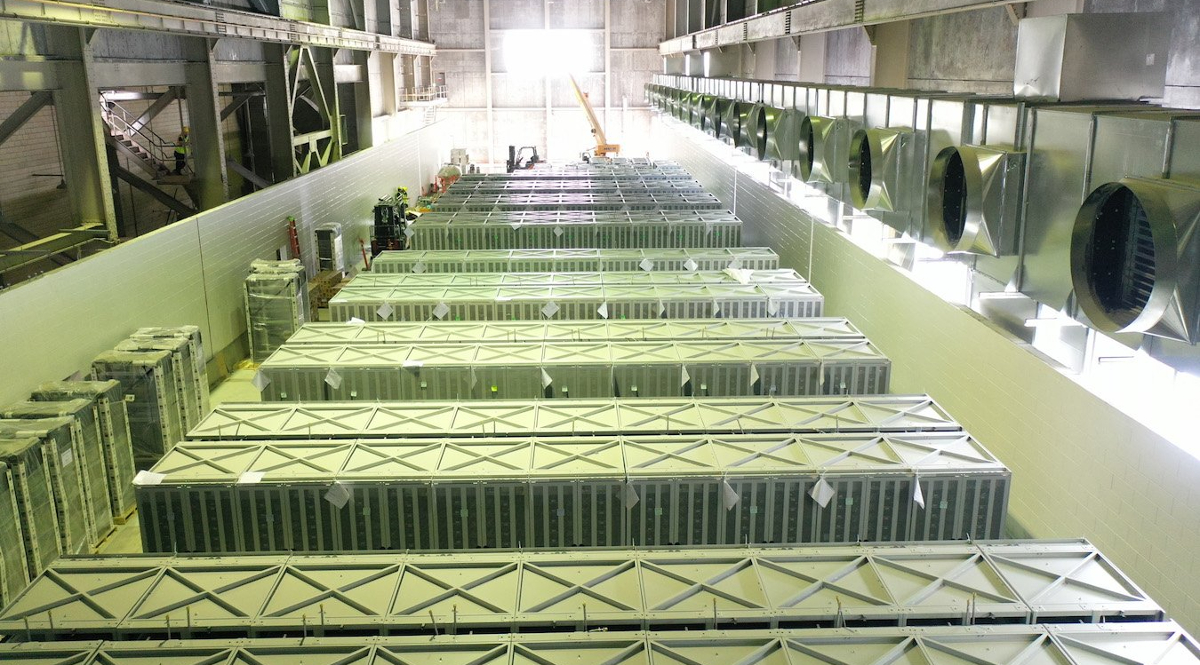
Sign up for daily news updates from CleanTechnica on email. Or follow us on Google News!
As if California was not suffering enough because of the horrific wildfires sweeping through Los Angeles, a separate fire at the Moss Landing battery storage facility between Santa Cruz and Monterey could be a major setback for battery storage in the Golden State. Several BESS installations are located at the site of the Moss Landing methane-powered thermal generating station that has been in operation since Harry Truman was in the White House.
The first phase was a 300 MW/1,200 MWh installation completed in 2020, which was followed by another 100 MW/400 MWh in Phase II completed the following year. Phase 3 — 350 MW/1,400 MWh — was added in August 2023, making it one of the largest battery storage installations in the world with a total of 750 MW/3,000 MWh. All three phases are owned and operated by Vistra Energy. Building the BESS facility at the site of the Vistra methane generating station meant the company was able to leverage the existing electricity grid infrastructure while minimizing zoning issues.
In addition, it allowed for potential further growth of the BESS plant, Vistra Energy CEO Jim Burke told Energy Storage News in 2023. The company said the Moss Landing Energy Storage Facility could eventually host 1.5 GW/6 GWh of battery storage if market conditions make that viable. In addition to the Vistra BESS installation, PG&E also has the 182.5 MW/730 MWh Elkhorn Battery project at the Moss Landing site. The Vistra batteries use cells supplied by LG Energy Solution while the Elkhorm batteries are supplied by Tesla.
Moss Landing Battery Storage Catches Fire

According to Lookout Santa Cruz, on Thursday, January 16, 2024, the Phase One portion of the Vistra battery storage facility caught fire, sending smoke 1000 feet high into the air and shockwaves through the BESS industry in California. Santa Cruz County health officials on Friday morning canceled a warning for residents to remain indoors, saying in an alert that there was “no imminent significant threat” from the fire.
North Monterey County Fire Chief Joel Mendoza told a media briefing that the fire had largely died down. On a scale of 0 to 100, with 100 being the fire at its peak, the blaze was “in the vicinity of 1% to 5%,” he said. He added that preliminary monitoring by Vistra and the Environmental Protection Agency showed that there was no hydrogen fluoride gas detected in the area. Hydrogen fluoride gas is a highly toxic gas that can be emitted from lithium battery fires. He reiterated that there were no injuries to any civilians, plant personnel, or any first responders.
Brad Watson, senior director of community affairs at Vistra, told a Friday morning news conference that the company is taking the incident very seriously and that safety is its top priority. Vistra Regional Vice President Pete Ziegler said the company would share further information about the incident as it becomes available. “We don’t know the root cause of this yet. Obviously it’s less than 24 hours old, so once we have that, we can make adjustments based on those findings.”
Reaction from state and local officials was swift. State Senator John Laird sad, “It’s just tragic. The goal of everyone being safe, and the goal of getting off fossil fuels and having a clean energy grid, are in conflict with this situation.” State and local leaders throughout this environmentally minded Central Coast unleashed a chorus of frustration and disappointment. All demanded accountability and acknowledged the skepticism ahead for this technology meant to clean the air, not fill it with toxic chemicals.
Assemblymember Dawn Addis, whose district stretches from San Luis Obispo into Live Oak, called for accountability from Vistra Corp., the Texas-based company that owns the facility. “We cannot see another battery storage fire ever in the future of California and we need to absolutely make sure that that never happens again in Moss Landing,” she said. “I’m looking for that commitment. We were told this facility is safe. Clearly there’s issues here. We can never go back to those conversations. We have to go forward and know this is never going to happen again in California.”
“This is really a Three Mile Island event for this industry,” said Monterey County Supervisor Glenn Church. “If renewable energy is going to be the future, it really needs to be safe energy. There’s got to be lessons learned from this. There really needs to be a full independent investigation of what’s happened here.”
The fire marks the fourth, and by far the largest, emergency response incident at Moss Landing in less than four years. Battery packs smoked up and triggered the fire suppression system twice over a five-month period at the Vistra site between 2021 and 2022. In September 2022, a nearby battery facility owned by Tesla and Pacific Gas & Electric caught fire, shutting down Highway 1 and forcing a shelter in place order.
Other Battery Storage Plans May Be Affected
The fire at Moss Landing happened one month after Santa Cruz County received an application for a $200 million, 200 MW battery storage facility in South County, just outside of Watsonville, a community located north of Moss Landing closer to Santa Cruz. The project, submitted by Massachusetts-based New Leaf Energy, is in its early stages and is expected to come before the Santa Cruz County Board of Supervisors for approval later this year. Local officials are already saying the Moss Landing fire will make it a tougher sell.
“There’s going to be a high level of scrutiny, especially in light of this disaster,” District 3 Supervisor Justin Cummings told Lookout. “I’m really going to be focused on that. This is the tightrope we walk with trying to move into a green age where we move away from fossil fuels.” District 1 Supervisor Manu Koenig called it “crazy timing” that a fire broke out just as the county is starting to consider a battery facility of its own. He said the fact that the most recent fire is the fourth incident since late 2021 is concerning.
“It seems less like a risk that maybe a fire will happen and more like an inevitability that a fire at these facilities will happen,” Koenig said. “New technology has risks, and as public officials we have to quantify those risks and determine whether or not it’s worth it. We’re now seeing that the risks associated with these large battery facilities might be higher than we expected. I’m definitely going to be scrutinizing the data.”
County spokesperson Jason Hoppin said a full vetting of the Moss Landing fire will be critical before the county commits to considering a battery storage facility within its borders. “We need to see the results of the investigation into this facility and to be convinced adequate safeguards are in place to reduce the chance of a similar event — to as close to zero as possible — before making any decisions on conditions for a future facility.”
The safety features and design of the battery storage facility proposed for South County are different from the Moss Landing battery facility, said Max Christian, project lead for New Leaf Energy. The batteries will be stored in steel containers that will have heat monitoring and fire suppression systems, he said. Each container will be separated by several feet. If a battery was to catch on fire at the storage facility, the smoke would not disperse into the air but remain inside the container, he said. In addition, the batteries are designed to comply with California’s safety guidelines and legislation. New Leaf is working with local fire agencies to discuss best safety practices as the project continues, Christian said. He added that the company will take what’s happening in Moss Landing as a learning tool when it comes to improving safety standards for the Watsonville project as more information becomes available.
Mark Jacobson Responds
Mark Jacobson, professor of environmental engineering at Stanford University, took a more nuanced view. He told Mercury News that fires at battery plants are rare. By helping the state’s renewable energy keep growing, they are reducing the amount of electricity generated from natural gas, which in turn reduces soot and smog, he said. “I don’t consider this a disaster. San Bruno was a disaster,” Jacobson said, referring to the explosion of a PG&E natural gas pipeline in 2010 that killed 8 people and destroyed 37 homes in a San Mateo County.
Jacobson acknowledged the battery storage industry needs to do a better job explaining to the public the safety systems in its facilities and how they work. But all forms of energy storage and generation have risk, he said. The situation is similar to battery fires in electric cars which happen much less frequently than gasoline fires. In fact, gasoline fires are so common the media seldom report them while they cover battery fires excessively.
There is another consideration here. Battery chemistries used for battery storage are changing. We are speculating that the Phase I portion of the Vistra facility at Moss Landing used NMC lithium-ion batteries, which are much more susceptible to fires than the LFP lithium-ion batteries that are now the standard for battery storage. New technologies such as sodium ion are coming available and will be even less likely to catch fire than LFP batteries. The battery storage industry needs to do a much better job of explaining such things to the public to calm the fears that so often are associated with new technologies.
Chip in a few dollars a month to help support independent cleantech coverage that helps to accelerate the cleantech revolution!
Have a tip for CleanTechnica? Want to advertise? Want to suggest a guest for our CleanTech Talk podcast? Contact us here.
Sign up for our daily newsletter for 15 new cleantech stories a day. Or sign up for our weekly one if daily is too frequent.
CleanTechnica uses affiliate links. See our policy here.
CleanTechnica’s Comment Policy

